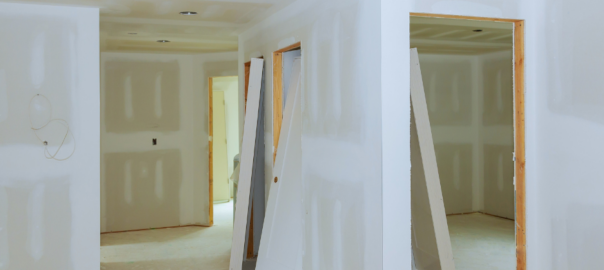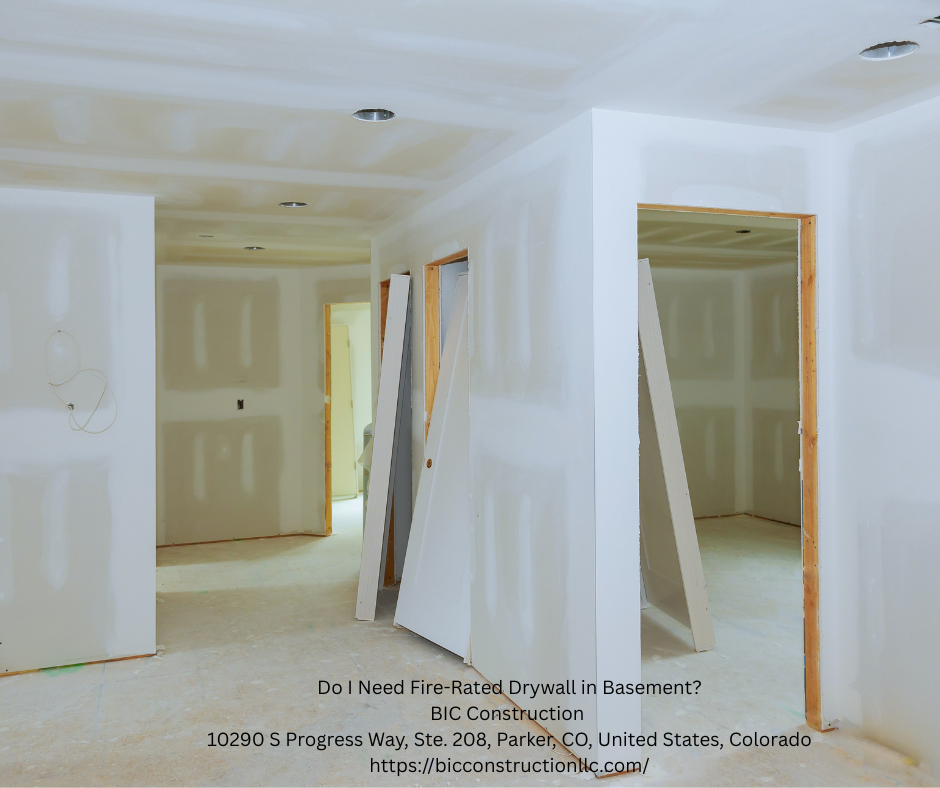If you’re renovating your basement, you definitely need fire-rated drywall. It enhances safety by slowing the spread of flames and helps you comply with local building codes. This drywall protects your home and loved ones, especially in high-risk areas. Though it costs more than standard drywall, the long-term benefits include lower insurance rates and better property value. Want to know more about the various types, installation techniques, and potential savings?
What to Know About Fire-Rated Drywall
Fire-rated drywall is essential for enhancing safety in spaces like basements, especially if you’re planning or already using basement finishing services.
You’re probably wondering what makes it different from regular drywall. The key lies in its drywall composition, which includes additives that improve fire resistance. This type of drywall can withstand flames longer than standard options, giving you extra time to escape during a fire.
It’s typically rated for either one or two hours, depending on the specific product. When you install fire-rated drywall, you’re not just following safety measures; you’re actively protecting your home and family.
It can be a vital element in your basement’s design, minimizing the risk of fire spreading to other areas. Choosing the right materials can make all the difference in ensuring a safer environment.
Local Building Codes and Regulations
When planning to install fire-rated drywall in your basement, you need to check your local building codes.
These codes can vary greatly from one area to another, so it’s essential to understand what’s required in your region.
Knowing the specific regulations helps guarantee your project meets safety standards and avoids costly mistakes.
-
Code Requirements Overview
Many areas require fire-rated drywall in basements, especially near utility rooms, staircases, or garages. These rules are meant to help slow down the spread of fire and protect people inside the home. Make sure you use the right drywall thickness and follow proper installation steps to stay compliant.
-
Local Variations Explained
Building codes can change depending on where you live. For example, areas at high risk for wildfires or with stricter fire laws might require more layers or specific fire-rated products. Always check with your local council or a licensed contractor to be sure your project meets the exact standards for your area.
The Importance of Fire Safety in Basements
Fire safety in basements isn’t just a precaution; it’s a necessity that can safeguard your home and loved ones.
Basements often contain various materials that can pose fire hazards, such as wooden beams, insulation, and stored items. If you’re using your basement for storage or living space, it’s essential to take into account the types of basement materials you have.
Inadequate fire safety measures can lead to faster spreading of flames and increased smoke production, making escape difficult. Regular inspections and proper maintenance can help you identify potential fire risks early.
Benefits of Using Fire-Rated Drywall
Fire-rated drywall adds an extra layer of protection and reliability to your basement. Here’s why it’s a good option:
- Slows fire spread – Gives you more time to react and evacuate safely.
- Withstands high temperatures – Built to resist heat longer than standard drywall.
- Improves material durability – Stays strong over time, even with daily wear.
- Boosts home safety – Helps protect your family and property.
- May reduce insurance costs – Some providers offer discounts for fire-resistant materials.
Choosing fire-rated drywall makes your basement safer and more dependable.
Types of Fire-Rated Drywall Available
There are several types of fire-rated drywall available, each designed to meet specific fire safety needs.
You’ll encounter Type X drywall, which offers a one-hour fire rating, making it suitable for most residential applications.
Then there’s Type C drywall, providing a one-hour rating with superior moisture resistance, ideal for areas prone to humidity.
For more intense needs, you might consider Type H, which delivers a two-hour rating, often used in commercial spaces.
When you’re doing a types comparison, consider your specific environment and regulations.
As for installation tips, always check the manufacturer’s guidelines, use the right screws, and guarantee proper sealing to maximize the fire-resistant properties of these materials.
Installation Considerations for Fire-Rated Drywall
Installation Considerations for Fire-Rated Drywall
When installing fire-rated drywall in your basement, it’s important to follow proper steps to meet safety standards and building codes.
Key points to consider:
- Check local codes: These may require specific drywall thickness or materials based on your home’s layout.
- Seal joints and gaps: Use fire-rated tape and caulk to block smoke and flames.
- Use proper tools: Fire-rated screws and the right framing ensure the drywall stays secure.
- Stagger seams: This reduces weak points and improves fire resistance.
Fire-rated drywall offers several advantages. It helps slow down the spread of fire, giving you more time to respond in case of an emergency. It also improves insulation, making your basement more energy-efficient. By adding an extra layer of protection, it supports overall home safety. In some cases, using fire-rated materials can even lead to lower insurance costs.
Frequently Asked Questions
Can I Paint Over Fire-Rated Drywall?
You can paint over fire-rated drywall. For instance, using a spray technique guarantees even coverage while enhancing fire safety. Just choose non-flammable paint and apply proper painting techniques to maintain both appearance and protection.
How Long Does Fire-Rated Drywall Last?
Fire-rated drywall generally lasts around 30 to 60 minutes of fire resistance, depending on its thickness and installation guidelines. Properly installed, it can greatly enhance safety in your space, providing peace of mind during emergencies.
Is Fire-Rated Drywall Waterproof?
Fire-rated drywall isn’t waterproof, but it offers fire resistance properties. It can act as a moisture barrier to some extent, helping prevent water damage, but you should still use proper waterproofing in wet areas.
Can I Use Regular Drywall in My Basement?
You can use regular drywall in your basement, but consider fire safety and local basement regulations. Regular drywall may not meet necessary fire codes, so it’s wise to check requirements before proceeding with your project.
What Happens if Fire-Rated Drywall Gets Damaged?
What if your fire-rated drywall gets damaged? Its fire resistance diminishes, leaving you vulnerable. You’ve got repair options, but quick action is crucial to restore its protective qualities and guarantee safety in your space.


